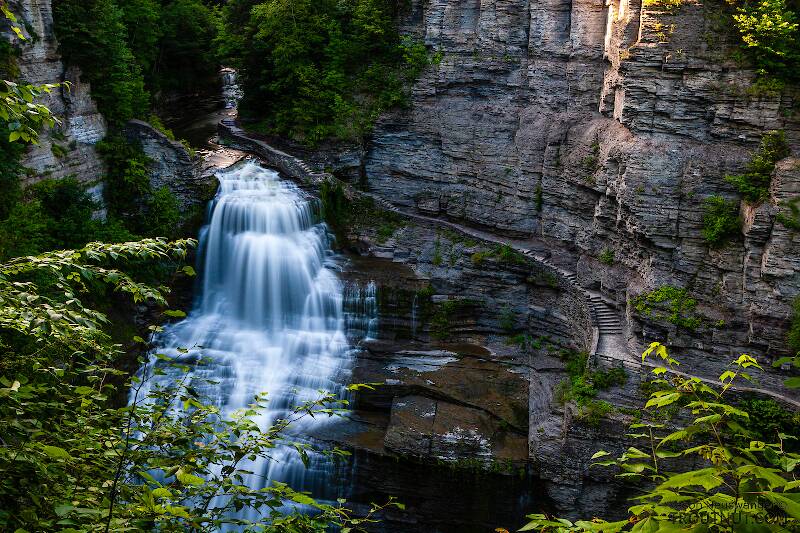
Salmonflies
Pteronarcys californica
The giant Salmonflies of the Western mountains are legendary for their proclivity to elicit consistent dry-fly action and ferocious strikes.


Stonefly Species Diura nanseni (Arctic Springflies)
Species Range
Physical description
Most physical descriptions on Troutnut are direct or slightly edited quotes from the original scientific sources describing or updating the species, although there may be errors in copying them to this website. Such descriptions aren't always definitive, because species often turn out to be more variable than the original describers observed. In some cases, only a single specimen was described! However, they are useful starting points.
Description from GBIFthe Global Biodiversity Information Facility
Source: Diura Washingtoniana (Hanson) Resurrected From Synonymy With Diura Nanseni (Kempny) (Plecoptera: Perlodidae), Supplemented With A Description Of The Larva And Egg And Comparison To Other Congeners
Adult habitus. In life general color dark brown to black (Kempny 1900), when preserved in alcohol coffee or tan brown (Figs 40 - 45). Head dorsum with a dark brown X-band on frons (Figs. 31, 40); M-line less distinct than that of Diura washingtoniana; small oval-shaped light spot near base of the antennae of each side; interocellular area with sub-triangular light spot; vertex and occiput with a transverse, light, median band adjacent to, but separated from, the interocellular spot. Markings on head, pronotum, and meso- and metaeusterna (Figs. 31, 32) similar to those of Diura washingtoniana. A complete sternacostal suture (Fig. 32 ss) is present as well. As in Diura washingtoniana, only abdominal segments 1 & 2 divided by the pleural membrane of each side into separate terga and sterna.
Male. Body length of Diura nanseni (Lillehammer 1974) generally smaller than Diura washingtoniana, approximately 0.5 to 0.9 X the length of the latter. Macropterous, forewing length (Lillehammer 1974) similar to Diura washingtoniana. However, micropterous populations are reported from Norway (Lillehammmer 1974, Saltveit and Brittain 1986) and Mongolia’s Bayanhkongor province (Raušer 1968). In the latter case specimens are likely Diura bicaudata as this species has been found in this province (see Material Examined section for Diura bicaudata below). Tergum 8 (Fig. 33) with a median line of lightly sclerotized spots; setose but lacking blunt, stout sensilla basiconica. Tergum 9 pattern of sclerotization differs from Diura washingtoniana in that the small mesal, shallow, U-shaped area at the hind margin (Fig. 33) is separated by a short distance from the anteriorly located narrow, longitudinal, lightly sclerotized median strip; setose but lacking blunt, stout sensilla basiconica (Figs. 34, 74). Tergum 10 pattern of sclerotization as well as the distribution of setae and blunt, stout sensilla basiconica similar to those exhibited by Diura washingtoniana (Fig. 33). Epiproct also absent. Paraproct caudal projections in dorsal and ventral views (Figs. 33, 36, 41, 44) with outer surfaces more convex than those of Diura washingoniana; setose with both short as well as long, slender setae; in lateral view (Figs. 34, 35, 42, 45, 75) they resemble a Bowie knife blade in that the apical frontodorsal margins are noticeably ‘ clipped out’, terminating in broadly rounded short tips that, unlike those of Diura washingtoniana, are not bulbous or so sharply upturned as to appear boot-like.
Female. Body length (Lillehammer 1974) approximately 0.75 to 0.95 X the length of Diura washingtoniana. Macropterous, forewing length (Lillehammer 1974) similar to Diura washingoniana. Subgenital plate shape variable (Figs. 37, 38, 43) (Brinck 1949, Lillehammer 1974); somewhat narrower than that of Diura washingtoniana, ca 2.0 – 2.5 X wider than long. Spermatheca and vagina similar to those of Diura washingtoniana (Fig. 39), spermatheca (s) appears somewhat more elongate, approximately 3.5 X longer than wide; spermathecal duct (sd) 0.9 X length of vagina (v); spermatheca and duct bearing accessory glands (ag).
Larva. Originally described by Brinck (1949), other descriptive information provided by Brinck (1952), Saltveit (1978), and Lillehammer (1988). Similar to that of Diura washingtoniana, including pronotum lateral margins with few or no spinulae.
Egg. Initially described by Lillehammer (1988, fig. 76) and nearly identical to Diura washingtoniana. Source: Diura Washingtoniana (Hanson) Resurrected From Synonymy With Diura Nanseni (Kempny) (Plecoptera: Perlodidae), Supplemented With A Description Of The Larva And Egg And Comparison To Other Congeners
Arctic Springfly http: // lsid. speciesfile. org / urn: lsid: Plecoptera. speciesfile. org: TaxonName: 927 Figs. 31 - 45, 74 - 77
Start a Discussion of Diura nanseni
Stonefly Species Diura nanseni (Arctic Springflies)
Species Range
Common Name
Resources
- NatureServe
- Integrated Taxonomic Information System
- Global Biodiversity Information Facility
- Described by Kempny, P. (1900) Über die Perliden-Fauna Norwegens. Verhandlungen der Kaiserlich-Königlichen Zoologisch-botanischen Gesellschaft in Wien 50, 85–99.

